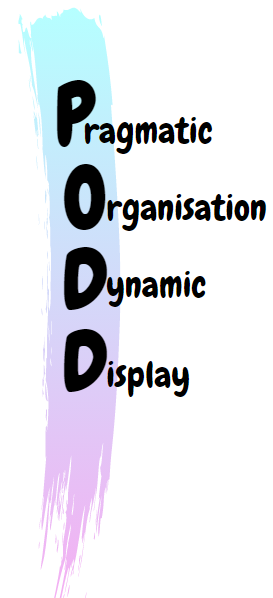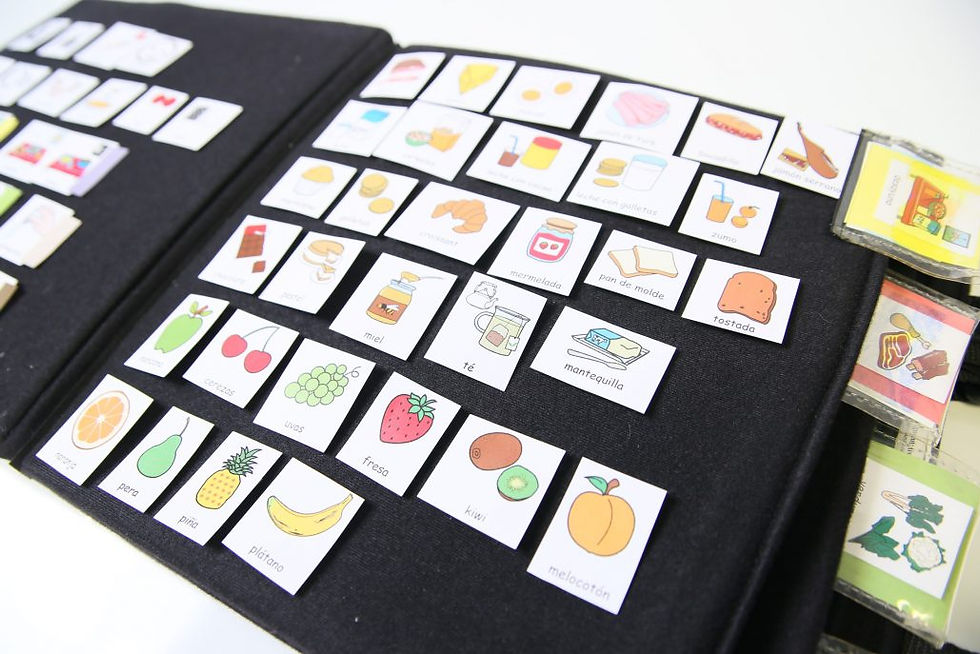PODD METHOD
- ltorrento
- 16 oct 2020
- 2 Min. de lectura

Pragmatic: takes care of the use of language. (This is where children with ASD or Asperger Syndrome have more difficulties because they express what they feel without considering the environment).
Organisation: words and symbols are organized in a systematic way.
Dynamic Display: the way to organize the communication notebook.
PODD method
The PODD method is an Alternative and Augmentative Communication (AAC) strategy. It was developed by Gayle Porter, an Australian speech therapist with more than 25 years of experience specializing in communication and language problems.
This method is based on the dynamic tables of the pragmatic organization of the language, they are dynamic communication notebooks with vocabulary organized pragmatically from graphic symbols, pictograms or even written words.
The PODD method allows the family environment of children with difficulties and the professionals who help them, to learn to create multiple personalized communication notebooks adapted to the child's specific communication, language, sensory and physical needs. After years of use, it has been shown to be helpful in developing communication in patients with cerebral palsy, Angelman syndrome, RETT syndrome, or autism.
The uses of the PODD communication notebook
Help a person communicate more effectively
Help to understand the language of other people (the person with whom the person with the difficulty or illness communicates, points to the symbols or pictograms that the person has said)
Expand vocabulary by adding new flashcards
To choose the most appropriate messages for each situation

The types of the strategies of PODD communication notebook
The PODD communication notebook is very flexible, it is organized and read in a way adapted to the child and the difficulties and abilities they have. The most common strategies for working with PODD communication notebooks are:
- Direct selection (pointing with the finger, with the eyes or with other parts of the body, to indicate the pictograms, words or symbols that the child wants to communicate so that the other person can interpret them) This is the most common and used.
- The visual alternative (for the visually impaired, it is possible to use symbols instead of pictograms)
- The coded selection (each column and each line is assigned a reference, it can be number and color for example, then the child will have to look at the color and number that correspond to what he wants to say)
- Assisted selection (the person accompanying the child can point to or read the different pictograms until the child indicates the correct choice)
- Select and display (the child can pick up the pictogram and display it or leave it on the communication desk to create complete sentences) Before this, however, direct selection should be a priority.
Finally
As I have already mentioned before, when a child suffers from a problem that makes it difficult for him to speak, it is very useful for the family and the professional environment of the child to use this method to be able to communicate with him. To do this, the environment has to have a wide vocabulary, always have the notebook available (to be able to communicate with the child at any time), help the child turn the pages in case they cannot… Therefore, the key to using this AAC technique is persistence and dedication.
Did you know this AAC technique? What do you think about this?
WEBS:


Comentarios